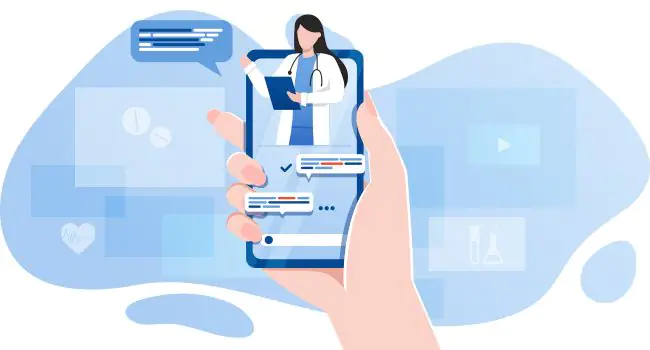Did you know that you can now avail health services online as well? Such health related services that are distributed to those in need through telecommunication technologies are what we collectively call telemedicine or telehealth. Telemedicine can include different branches that are concerned with different health problems. Tele-ophthalmology is one such branch of telemedicine.
Let us go through this article to understand tele-ophthalmology in a little more detail.
What is Tele-ophthalmology?
Tele-ophthalmology is a branch of telemedicine that focuses on providing eye care to patients through telecommunications technology and digital medical equipment. In simple language, it can also be called tele-medicine for eye care. One of the main objectives of tele-ophthalmology is to deliver eye care to patients living in remote areas who have limited access to eye specialists and other healthcare services.
By using tele-ophthalmology, eye care professionals can take ocular images, which allow them to understand the patient’s eye problem and work on the treatment application accordingly. The equipment required for this process is a camera and a computer terminal network for capturing and transferring the images.
Tele-ophthalmology has been gaining popularity over the past few years and is being used by leading eye care providers like Center for Sight hospitals and clinics.
Process of Tele-ophthalmology
There are two main ways the tele-ophthalmology process can take place— synchronous tele-ophthalmology and asynchronous tele-ophthalmology. Let us have a look at both these types one by one.
1. Synchronous Tele-ophthalmology
In synchronous tele-ophthalmology, there can be real-time interaction between the patients and the eye care professionals through telecommunication technologies. This type of tele-ophthalmology can be used for consultations and also can be used between two or more ophthalmologists to supervise the removal of corneal foreign bodies through synchronous video-conferencing.
2. Asynchronous tele-ophthalmology
Through asynchronous tele-ophthalmology, the data is stored and then reviewed by the professionals later on.
Benefits of Tele-ophthalmology
Tele-ophthalmology aims at providing eye care to all patients, especially those who have limited access to health care. There are several benefits that tele-ophthalmology offers, which are as follows:
- Tele-ophthalmology ensures improved patient care by providing eye care services to a wide range of patients who need it.
- This process can strengthen the referral patterns as consultations can be done online using telecommunications technologies.
- Through tele-ophthalmology, eye care services can be provided to patients living in remote areas who have limited access to healthcare.
- This can also be used as a method of education for clinical staff.
- Two professionals can interact with each other through video-conferencing to discuss complex cases or even supervise surgical procedures.
- Ophthalmologists who are still in their learning years can take advantage of such services by attending video conferences with their seniors.
Why Choose Centre for Sight?
Centre for Sight aims to provide effective eye care by utilising the latest technology operated by the expert ophthalmologists and specialists working with us. The health care team at Centre for Sight is highly qualified and trained to use the high class technology that helps deliver services like tele-ophthalmology to the patients.
Centre for Sight provides tele-ophthalmology services intending to deliver the best eye care to all using the latest technologies to diagnose and treat eye ailments. The tele-ophthalmology services offered by the Centre for Sight helps maximum patients to consult expert doctors from the comfort of their homes. This raises the standard of both consultation and treatment while also fulfilling the aim of our organisation.
Article: Tele-ophthalmology: What does it mean? | Centre for Sight
Author: CFS Editorial Team | Aug 20 2021 | UPDATED 01:45 IST
*The views expressed here are solely those of the author in his private capacity and do not in any way represent the views of Centre for Sight.





